I would rate red mites as being one of the biggest problems you will face when keeping chickens. Red Mites live in the cracks of chicken houses (typically under perch ends) coming out at night, crawling onto your birds for a feed.
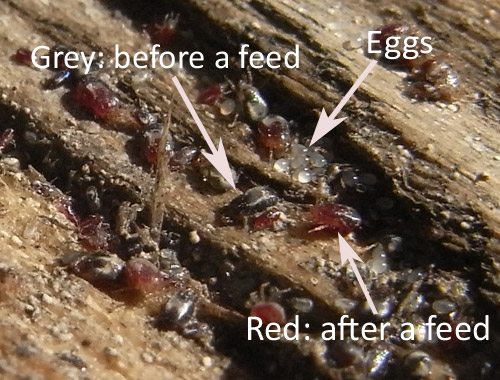
Macro shot of Red Mite in a crack on a perch. These were disturbed after a treatment with Poultry Shield.
They start off as very small greyish-white mites that swell up into red coloured mites after a feed and at their biggest are only 1mm so small numbers of them can be hard to spot unless you know what to look for.
You will often find a grey ash like deposit around perch ends which is where the mites have been and if you lift the perch, you will see clumps of mites.
Red Mite in chickens’ houses are active during the warmer months, usually May to October and will become dormant over the winter. They multiply at an incredible rate: their life cycle is just 7-10 days. In other words from hatching from an egg to being an adult laying hundreds of eggs takes just a week if conditions are right.
Be Proactive.
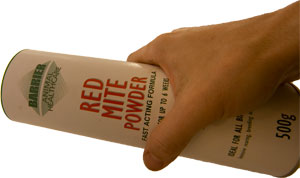 The best course of action is to check for red mite routinely when you clean your chicken house out and use some preventative treatment to the house before they get a hold. You will get to know the places to look and once you have found small numbers of them, you can treat the house to keep numbers under control. See my ‘preventative measures’ below
The best course of action is to check for red mite routinely when you clean your chicken house out and use some preventative treatment to the house before they get a hold. You will get to know the places to look and once you have found small numbers of them, you can treat the house to keep numbers under control. See my ‘preventative measures’ below
Are there Red Mite in your Chicken House?
People normally discover Red Mite when they are over-run by them. When hens are being bitten, they can refuse to go in to roost at night, they will become anaemic and their combs will go pale. They will often stop laying and you may find red blood stains on eggs (squashed Red Mites). Eventually, you will start to see losses in the flock.
Checking for Red Mite in Chickens Houses
Red Mite will hide away in the daytime but can often be seen if you lift perches, examining the ends. They will usually come swarming out if you treat the cracks with Poultry Shield but by far the easiest way to check to see if there are red mite is to take a piece of white kitchen roll and to rub it along the underside of the perch when your hens are roosting (in the dark). Look at the tissue and if there are Red Mite heading back from their feed, they will be squashed on the kitchen roll as streaks of blood.
Getting rid of Red Mite
It is very hard to get rid of them completely so it is often better to get the numbers down and then find a way of keeping them down that doesn’t involve you spending hours on cleaning the house out. There are lots of different treatments that people use, some more effective than others but I will focus on what I do and have found to be the most successful for me.
If you haven’t got red mite and the weather is warm enough for them (May to October in the UK) then skip step 1 and go straight to step 2. Preventative Measures.
1. Getting rid of an infestation.
If you find lots of red mite in the coop, it’s time for a big clean up that will take a couple of hours initially, then an hour every 5 to 7 days for at least 2 more weeks.
The products I have found to work the best (that are relatively safe) are Poultry Shield and Diatom. These two are not ‘knock down’ products as such, they do take a little while to work but are none the less very effective. I also use Red Mite Powder on the hens themselves to help them through the night when the Mites are active.
You can BUY Poultry Shield from Amazon Here.
Here is what I do with the Poultry Shield.
- Remove all birds from the house.
- Strip the house down as much as possible.
- Clean the house out – be careful where the bedding is going as red mite live for 6 months without a feed and will find a new home If they can. Ideally seal the bedding in bin bags or burn.
- Mix up as many watering cans of poultry shield mixture as is needed, as per the instructions on the label 1 part to 9 parts water.
- ‘Water’ all cracks in the chicken house, concentrating where there are perch ends and concentrations of red mite.
- Leave to soak for 15 minutes
- Red mites will be coming out. Cover them and the cracks with poultry shield again.
- Wait 15 minutes
- Hose out the house, concentrating on getting the pressure jet into the cracks and so on.
- Leave the house to dry.
Poultry Shield is a mild detergent and ‘washes’ the waxy coat off the red mites. It is also good for removing organic matter from the hen house so is useful for cleaning. I wouldn’t be without this!
After using the Poultry Shield, when the house is dry, I use Diatom. Diatom is made of micro skeletons of fossilised remains of diatoms. These were once a kind of algae found in water. They are microscopically sharp and pierce the outer waxy coating of the mites which causes them to dry out and die.
The second step also double up as my ‘preventative’ measures if you haven’t yet got a bad infestation
You can BUY Diatom from Amazon HERE
2. Preventative Measures
- Dust the ends of the perches / nest boxes and where ever else you found concentrations of red mites when cleaning.
- Rub as much into the perches as you can. Red mite will avoid the diatom and will crawl around it if they can, so make sure they have to crawl through it to get a feed.
- Repeat every couple of days for as long as you see signs of red mite in the coop.
Repeat the whole cleaning process if there are still lots of mites in 5 to 7 days. You will find you might not need to spend as long on the washing as there won’t be as many mites.
Very Important: Make sure you repeat it before 7 days so that the mites don’t have a chance to lay more eggs. A few mites become a lot in a very short space of time!
If you have a felt roof on your chicken house and they get underneath, it is usually impossible to get rid of them without removing the felt, cleaning and re-felting. My page on Chicken Houses gives more information.
Finally, I will dust the hens down between their feathers with Red Mite Powder to give them some respite during the night when the mites are active.
Beware of what you read!
There is a lot of information written about these troublesome ectoparasites on the internet these days, much of it re-written and re-spun. When I started writing about them, there was little available online. Strangely, some small errors that I had introduced on my page that I corrected in an update pop up frequently on other websites. Running a Google image search often uncovers companies that have used my copyrighted images! I make regular checks to try to stop this from happening.
If you wish to learn more about red mite then I would encourage you to read the guide to red mite on poultrykeeper.com. This is a reliable source of information and is regularly updated.

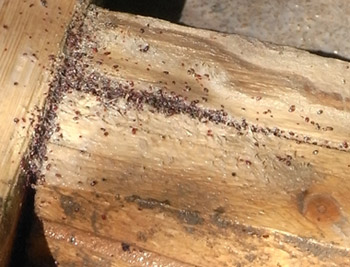

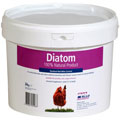

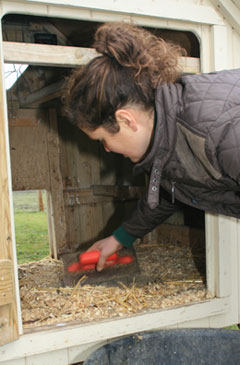
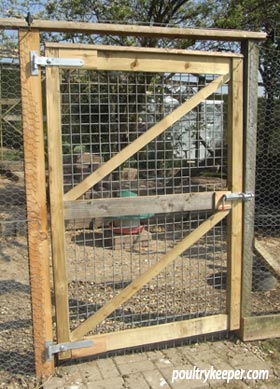
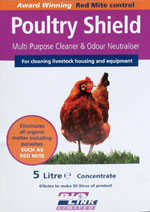
Thank you for your responses. I am still finding grey red mites crawling on me even though the infected coop is not any where near the chicken run and the hen is in the plastic cat carrier. I keep washing the carrier out and dusting the hen! . I want to use the harkers Harka-mectin but because from my local vet I was unable to find out the actual dose ( as in ug/kg) that a vet might prescribe ( using there clinical judgement). On the harkers box it says place 2 drops (200ug ivermectin) per bird onto the skin. Which brand name of this drug do you usually use? And what ug are you giving? Also my local vet asked another not local vet who does know about birds about ivermectin but apparently this vet said it does not work on red spider mites or feather mites just wondered what you thought of that ( keeping chickens). Kind regards Claire
They are red mite (red spider mite are the little red spiders you see on walls and patios sometimes).
2 drops that you see on the Harkamectin box I believe is for Pigeons? You would need to scale this according to the weight of the bird you are treating – so a bantam perhaps 3 drops and a large fowl perhaps 4. I haven’t used it for some years now.
Frontline type products do not work on Mites but Ivermectin does. To give you some confidence this is what ‘Chickenvet’ says about this on their red mite page:
>Other applications for the bird may involve some “off label” medication and we advise you always contact your vet for advice. Many poultry owners use Ivermectin 1% spot on drops, these can only be used with an appropriate egg withdrawal and future eggs from any treated bird should never be sold for human consumption.
Good luck.
Again thank you for your reply. So if I want to eat my hens eggs I should NOT give her ivermectin ? Have I got that right?. I now have a secondhand omlet coop and am in the process of creosoting my other coop which does not appear to have anything lurking in it. The chicken who’s coop was infested is still in the plastic cat carrier. The question I wondered was as I can’t move her area anywhere else will these red mites be living anywhere else and still creeping out at night and feeding off my hen? Do I need to somehow treat the ground as well?
Many thanks Claire
The mites are usually a problem that you can’t totally solve – once you get on top of them, you’ll find it’s a case of managing them by weekly cleaning, diatom etc.
The withdrawal period for eggs as mentioned before is what you feel comfortable with but a minimum of 7 days is sensible… So do not eat the eggs during the 7 days after the last treatment. Ivermectin also treats for many common poultry worms as well so it’s a shame it’s not licensed for chickens.
Thank you for your reply. The bit I still do not understand is the bit where they say the eggs should never be sold for human consumption ever if the hen has been treated with Ivermectin . Is this just because it is not licensed ! So you can eat them after a with drawl period? I have the Harka- mectin drops 0.35% w/v (200ug in 2 drops) you suggested I scale up as this 2 drop dose is for a pigeon to 3 or 4 drops. This morning when I went out to the hens I looked in my plastic coop and I could see no sign of anything lurking. Yesterday I found two red and grey red mites on the wooden roosting bars (these came with the coop because the plastic ones had been lost by the people I bought it off ) the new ones arrived yesterday! So that was alarming. But this morning even though I had washed everything down and dusted the three hens yet again, I still had a small grey red mite on my hand! I have done and am doing all I can do but I wonder if there is anything I could treat the ground with that would not course harm to the hens ! I think i will treat them with the harka mectin if after a withdrawal perood i can eat the eggs . i’ll wait for you to get back to me on that .Many thanks Claire
Please contact your Vet who can advise you on using Ivermectin ‘off label’ under their clinical judgement. I am not qualified so cannot offer advice and it makes things a little difficult.
Ivermectin is not licensed for chickens. There is therefore no test to prove it is safe to eat eggs, neither is there advice on a withdrawal period.
If you decide to use it as many others do, all you can work with is what vets have advised and this does vary and has a certain amount of ‘judgement’ on their part.
Food that is going into the food chain should never contain unlicensed drugs which is why they should never be sold for human consumption. Sadly, there is a shortage of treatments available for hens due to the cost of testing so you’ll find other drugs are often the same – yet vets will still use them and provide advice regarding egg withdrawal under their clinical judgement and poultry keepers will often pass advice around on forums to save the cost of a trip to the vets!
Red Mite are very resilient (can last 8 months without a feed) and the best you can do is try to manage the problem during the warm summer months when red mite are active. I have never had a problem with them on the ground, only in the coop. Once displaced, they find it hard to find their way back to the coop and there are natural predators such as earwigs that eat them.
Hello, I was wondering if you can advise me on whether it is safe to creosote our chicken house. We have a lot of red mite and I have spend most of today cleaning the chicken house out as you have suggested with Poultry Shield and I will be powdering it once it has dried out but the chap where I bought these treatments from suggested that I also creosote it. Could you please tell me if It is safe for the chickens ?
Hi Nikki,
Creosote was banned due to some dangerous chemicals that were used in it. In days gone by, that was the way poultry keepers kept their coops free from red mite: they would put a fresh coating of creosote on the coop every year. There is now creosote substitute available, however this doesn’t keep red mite away. Creosote can be bought for professional use from agricultural suppliers (in large tubs) and I don’t believe you are allowed to use it in public places. It has a whole raft of warnings on the tub.
Whether the old fashioned creosote was safe when used on chicken coops is unknown. The coops were certainly left for a long time to dry and for the smell to subside before chickens were put in the coop. My guess is it would be OK as long as the chickens don’t come into contact with it (there are warnings not to touch creosoted surfaces with bare skin) which would mean using bedding material on the floor / nest boxes and not coating the perches (just the ends) to avoid this.
There are some chicken keepers using creosote on their coops but for me, I feel it was banned for a good reason and I’m not prepared to put myself of birds at risk.
Hello. I have chickens in a wooden coop, sadly the mites moved in. I can’t seem to get them under control. I am reducing the numbers in the coop, but the mites are still very much in residence. The most annoying thing is the mites are covering me whenever I go in to the garden, not just touch the coop or my hens. It’s like they are in the grass and flower beds!?
How do you treat people for mites? :-O Do you think I should red mite powder my rabbits hutches as these are also wooden and in my back garden.
Thank you.
Hi Julie,
I think the mites in the grass must be something different – red mite live close enough to the chickens to go and get their next feed so can normally only be found in the coop. They like the dark so during the daytime are looking for cracks to hide away.
Poultry shield and Diatom are the best ‘safe’ treatments – but it does take time and even then, you still have to manage small numbers of mites, it’s very hard to get rid of them all. You can keep a small garden hand spray for wetting hot spots during the week and keep diatom rubbed into the perches and dusted around the cracks. Remember it’s breaking the life cycle that’s key – they can hatch and become an adult laying more eggs in a week during hot weather so you must try to treat the newly hatched mites before they are old enough to have a feed and then lay thousands more eggs. If you keep up the diatom and spray, OR if you remove the hens from the house for a couple of weeks, they can’t feed and therefore can’t lay any more eggs so your treatments are only reducing their numbers. They will however survive for up to 8 months without a feed so you still need to keep up treating the coop when there are no hens in there.
As for the garden, I would let nature move in – there are natural predators that will take care of them, earwigs are one. If you start ‘sanitising’ the ground you risk killing off all of the other micro-organisms and insects around which leaves no natural predators and…. so on.
A shower after treating the coop is usually good enough to get rid of any mites that are on you – but do remember to put your clothes in the washing machine straight away.
Thank you so much for your advice. I think we will stick with the poultry shield and powder in that case although my husband is thinking about using a blow torch on them as we have seen other people find it a good way to get rid of the little devils.
Yes the blow torch is very satisfying too 🙂 Just be very careful – it doesn’t take long for the wood to go black and start to burn. A cup of water in the other hand is usually a good idea and washing the house out afterwards to make sure you get any mites that crawl out having been disturbed works well.